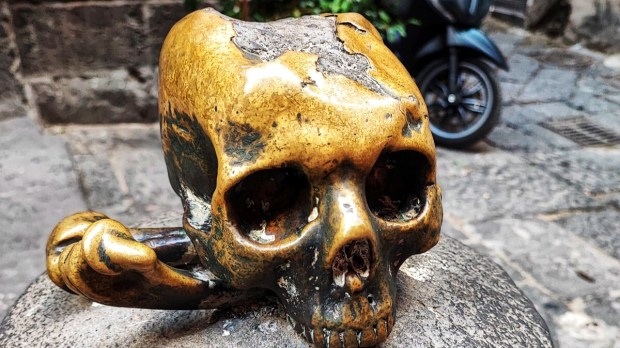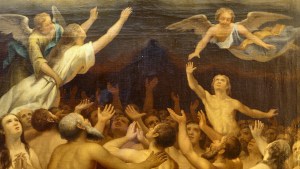Early November heralds two significant dates for the Catholic Church — November 1, All Saints’ Day, and November 2, All Souls’ Day. The feast of All Saints celebrates disciples of the church who are with God in heaven. All Souls’ Day is a day of prayer and remembrance to commemorate the faithful in Purgatory waiting to attain heaven. For one church in Naples, All Souls’ Day has a particularly strong resonance.
The Santa Maria delle Anime del Purgatorio in Naples is both a church and a museum. It provides historical insights into Neapolitan culture through faith, life, and death.
The 17th century was a disastrous period for Italy’s third-largest city.
Residents witnessed the second volcanic eruption of nearby Mount Vesuvius in 1631, along with a series of earthquakes and famines. More suffering followed in 1656 when the Black Death killed half of the city’s population.
Burying the dead presented a major problem. Naples suffered from severe loss of lives: Many were anonymous Catholics too poor to pay for burial. Churches and cemeteries were overwhelmed, and the poor and homeless could not get proper Christian burials.
An act of charity toward the dead
To alleviate the suffering of the Neapolitans during this dark period, a group of wealthy noblemen formed a humanitarian society called Congrega di Purgatorio ad Arco.
They contributed to and built Santa Maria delle Anime del Purgatorio (Saint Mary of the Souls of Purgatory), a little Baroque-style church in the heart of the city. They aimed to provide an adequate place for burying the dead, a holy place where grieving relatives could pray for their departed in Purgatory.
Finding Santa Maria delle Anime church on this busy thoroughfare is easy. Skulls and bronze crossbones distinguish the outside of the church, making an immediate connection between the living and the dead. The museum has two levels: an upper level with an upper church, a museum, and a lower church.
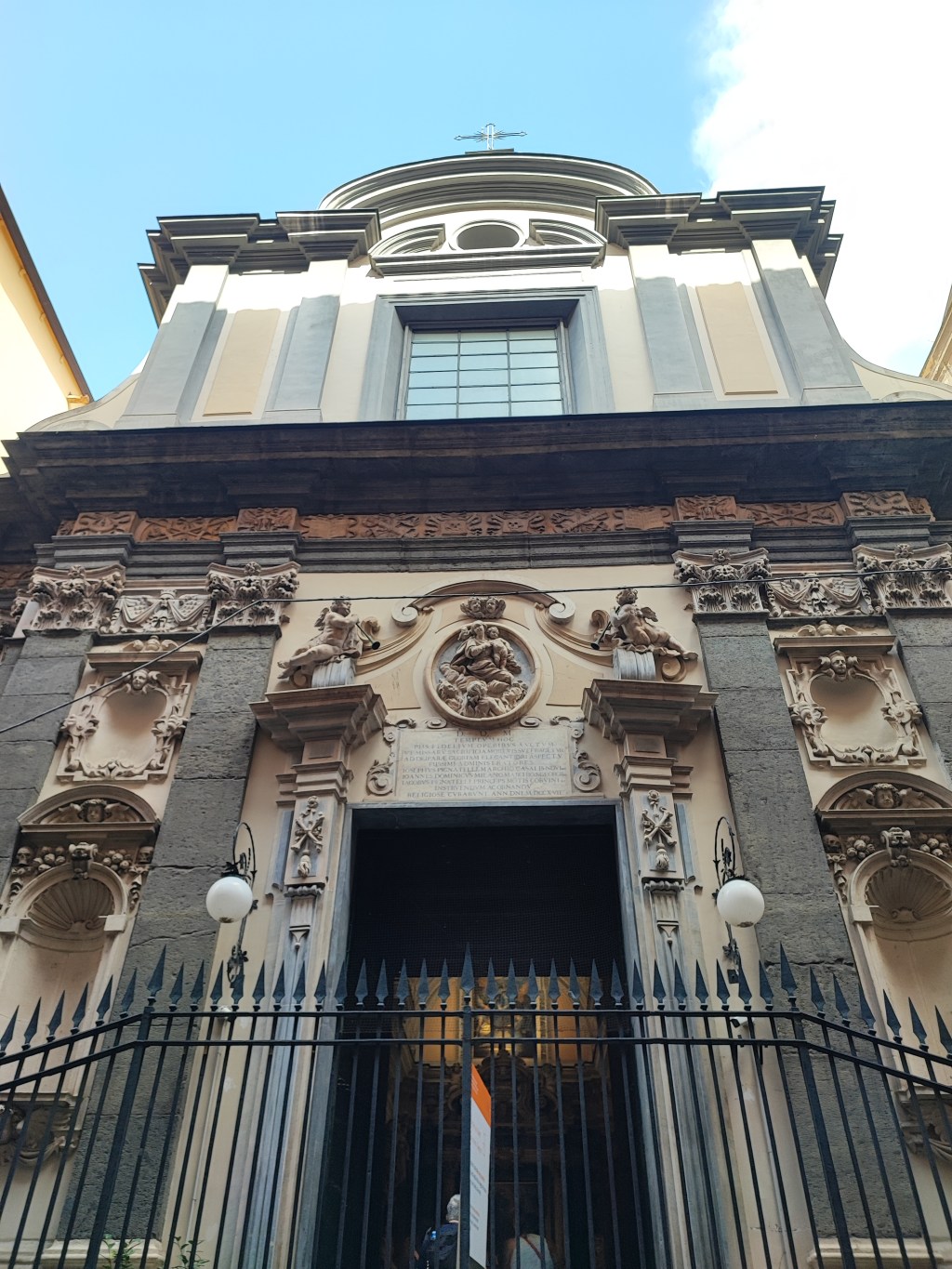
The underground church, accessible only with a guide, has several niches with altars, shrines, and letters preserved from the time of the cult of Veneration of the Dead. These relics in the hypogeum show how the people of Naples cared for the remains of abandoned bodies — specifically, the skull — and how it became an intense preoccupation of worshippers.
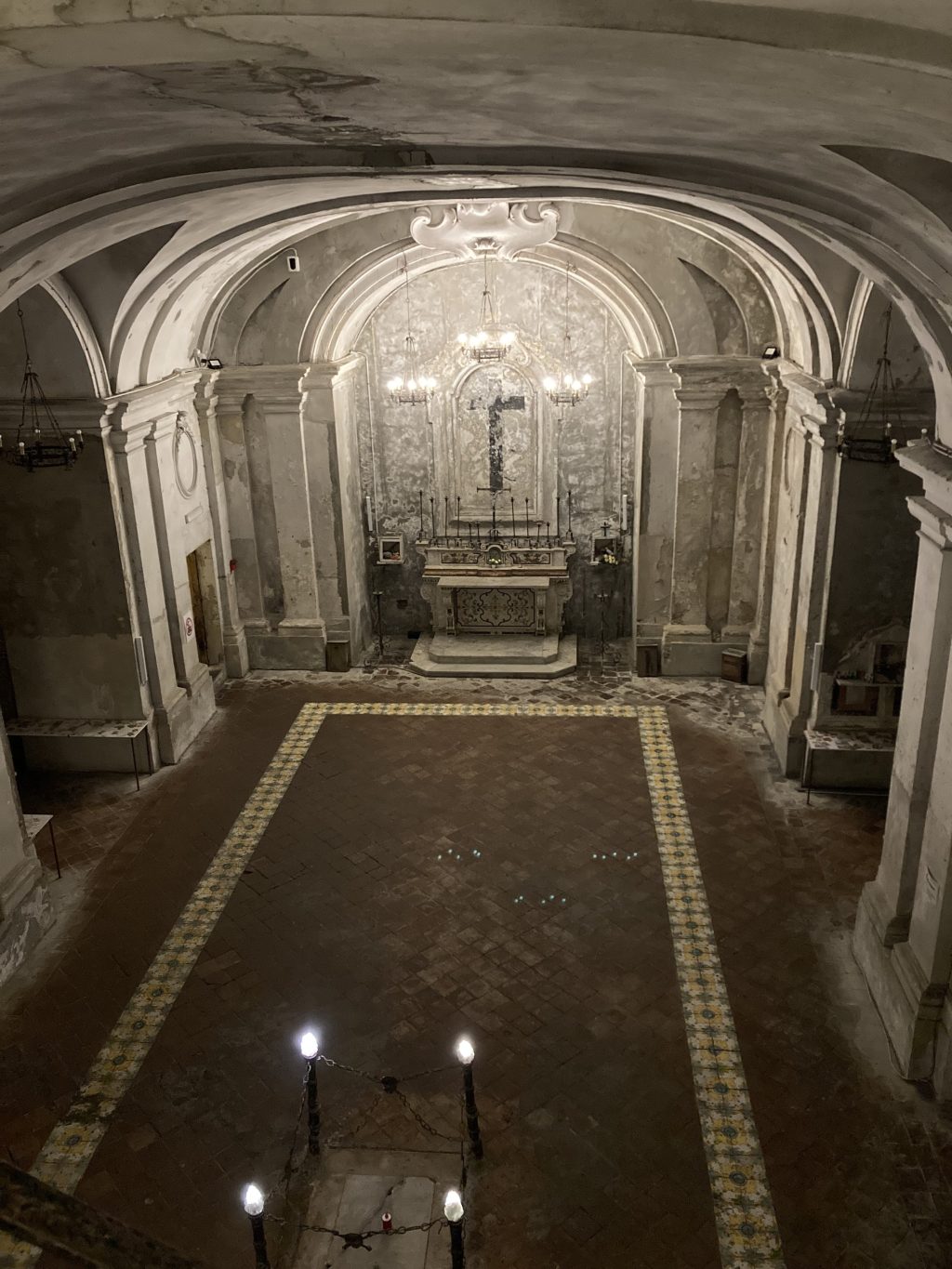
“Head of the dead”
Neapolitan Catholics who referred to the church as de e carpe e morte (the head of the dead) believed their prayers and offerings would help the anime pezzentelle (unfortunate souls) reduce their time in Purgatory and thus attain heaven.
In turn, the bestowers hoped they would benefit from special favors acquired from the benevolent dead.
Thus began the cult of adopting a skull, which continued for centuries until 1969, when the practice was banned. The archbishop of Naples, Corrado Ursi, decreed all “expressions of cult addressed to human remains [is] arbitrary, superstitious, and therefore inadmissible.”
Art, history, and worship
The church’s brighter, more elegant upper level is decorated with the theme of Purgatory.
The museum in the sacristy is home to some fine works of art: paintings, masterpieces by Italian artists, and various objects such as vestments, silverware, and priceless manuscripts dating from the 16th to the 19th century.
″Opera Pia″ Purgatorio ad Arco, a secular charity organization, owns and manages the museum complex of Santa Maria delle Anime del Purgatorio.
Lucia, a team leader at the museum, explained:
The Opera Pia Purgatorio ad Arco has owned the complex since 1604. Progetto Museo association has been managing the museum since 2000, using the collaboration of young graduates mainly in art history.
She said the association was founded in the 1990s by a group of female art historians who continue to participate in education at the museum today. “Both churches are still consecrated,” Lucia explained, “but only the upper church is used for celebrating Mass. Currently, a Mass is celebrated on Monday afternoon, a day dedicated to prayer for the souls in Purgatory. Usually, on November 2, a Latin Mass is celebrated in the traditional rite.”
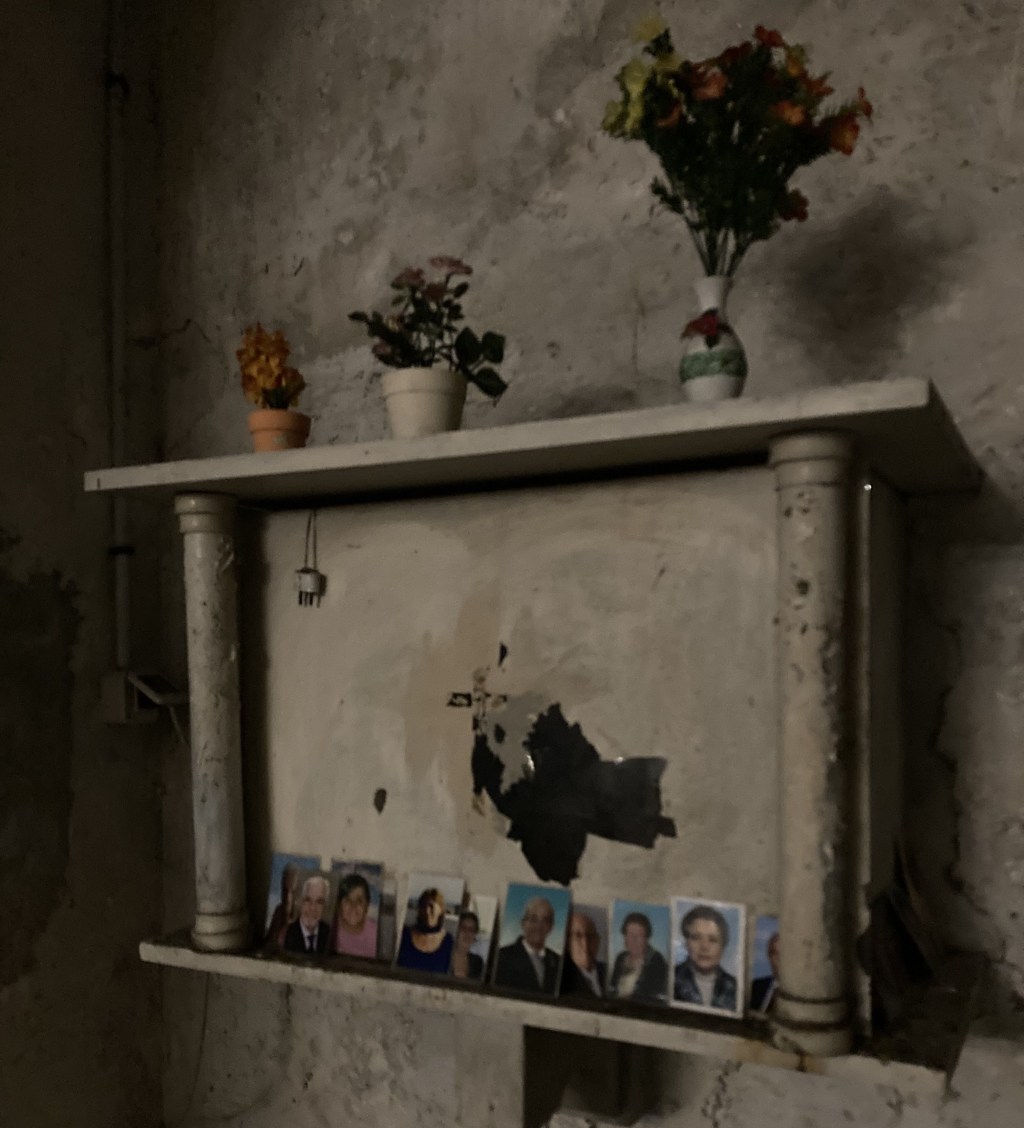
As we approach All Souls Day, let us remember the words of St. Pope John Paul II:
Praying for the souls in purgatory is the highest act of supernatural charity.
